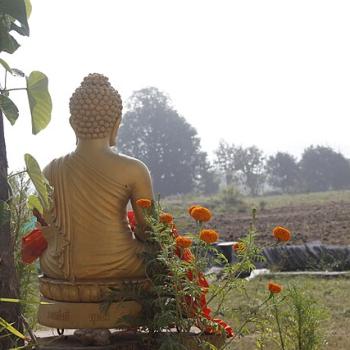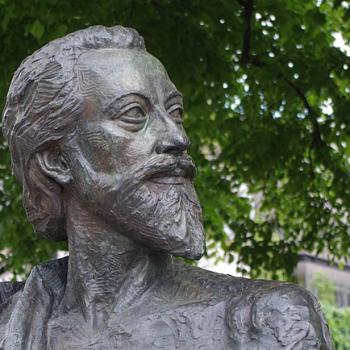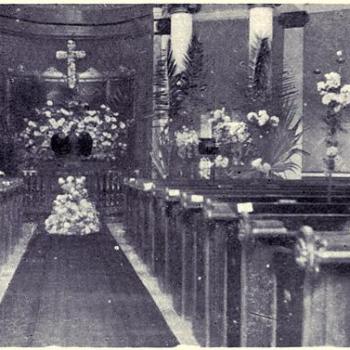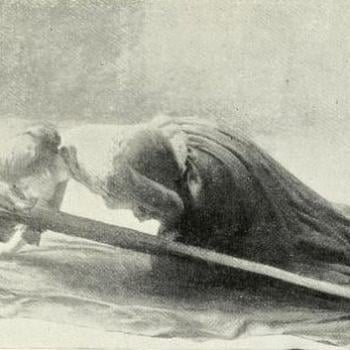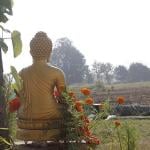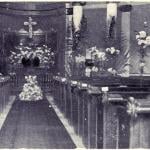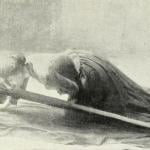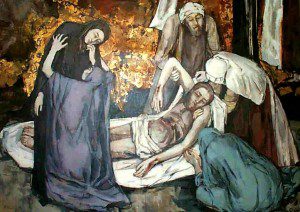 A couple of years ago I wrote a meditation on the Christian day before Easter, Holy Saturday. It continues to haunt me, and as the calendar has rolled around to another one, I thought I’d give it another go.
A couple of years ago I wrote a meditation on the Christian day before Easter, Holy Saturday. It continues to haunt me, and as the calendar has rolled around to another one, I thought I’d give it another go.
Holy Saturday. Jesus is dead. With that in the Christian story, God is dead. Resurrection has not yet happened. Actually there’s no good reason to even think of something like a resurrection. If you’ve lived any time at all you really know that when someone dies, they stay dead.
Yes, people tell stories of encounters with ghosts. And, well, I’ve had my own encounters. But, there’s always something vaguely dissatisfying about such things. They seem so open to easier non supernatural explanations. Most obviously they seem like projections of our hearts to old desires. And disconcertingly, they’re almost always private, they come up painfully short on corroboration. Me, when I hear these stories they usually seem so sad. So turning away from a hard truth.
This is that truth. We die. We all die. And we don’t come back from dying.
And with that let’s think about Holy Saturday. Again. Jesus is dead. God is dead.
A whole lot of questions bubble up. “What is death” is one. And we can continue to dig. “What is time” is another question deeply connected to this whole thing is “what is certainty?” The closer we look, the more confusing and messy it seems. In fact question seem to pile upon questions.
Now Zen likes questions. Particularly questions like these. In fact such questions often directly point toward the great matter, the deepest truth of our reality. Now, if a question is deep enough, if it touches the fundamental matter, like how we are isolated and following some strange trajectory, which sure looks like dissolution and death, it might be a koan. And this is one for the record books. The great koan of our lives.
A koan – literally, “public case,” as in a legal document. A koan is an assertion about reality and an invitation to an intimate encounter. Or, as Robert Aitken Roshi said, a koan is a matter to be made clear. Not just any matter, not how to fix a toaster, but the deep matters of our lives. And, yes, of our deaths. Some look like they’re about something else. “Count the stars in heaven.” “An Ox passes through a fence, all of it but its tail.” “Why does Guanyin have all those hands and eyes?” Even, “Show me the sound of that single hand.” But, they’re all about the fundamental matters of life, of love, of death. They invite us into our lives.
In Japanese Zen, in both the Rinzai and the Harada Yasutani koan curriculum one begins through a minute investigation of one of the “dharmakaya,” or “breakthrough,” or “first” koan, pick your term. After this there is a short course called “Miscellaneous Koan.”
In my school, a branch of the Harada Yasutani koan Zen lineage, these were once called “Miscellaneous Koans Following Kensho,” but that usage has fallen away. That word kensho, which is generally understood as enlightenment was seen by many of our teachers to be a bit over the top, or redundant, or, probably, a little of both.
However we call ‘em, I love these miscellaneous koan. Unlike some of the cases we encounter later, they are all very brief. “Save a Ghost,” “Walk straight on that road with ninety-nine curves,” “A young girl is walking toward you” for instance, are both the title of the koan and the whole thing. Not only do they introduce us to the range of what we will encounter as we go forward in the discipline, here we learn the tropes and style of the koan way. It is a rich time, with powerful and multifaceted pointers.
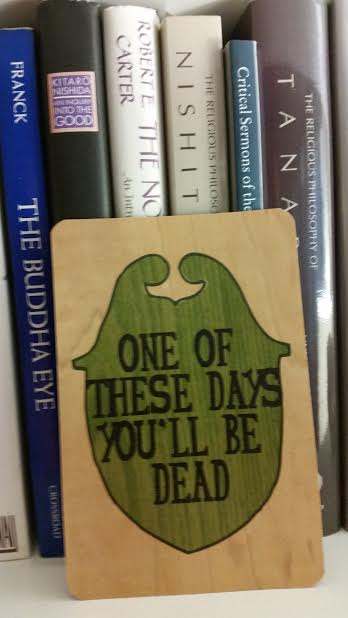 Among these, one of my favorite is called the “Stone Crypt.” It does contain a bit more to it than the title, although not all that much more.
Among these, one of my favorite is called the “Stone Crypt.” It does contain a bit more to it than the title, although not all that much more.
“You find yourself in a stone crypt. There is no window and the door is locked from the outside. How are you free?”
A good question. And, particularly, on this day, maybe the question. God is dead. You are dead. Resurrection? Really? Not here. Not now. Instead it is dead. Dead. Dead. All the way down. Dead.
In that place, inside the stone crypt, how are you free?
Now, that’s something for the human heart to break on. I find myself thinking of my family members who are now dead. My father. My mother. My son. My first wife. Dead. All of them.
I feel my aches and pains as I watch the ending of my sixties and feel the world getting smaller, my options shrinking. And think how I need to exercise more. I need to lose some more weight. Which, as important as these are for quality of life and maybe pushing out the parameters of the end of my life a bit, does not, will not, cannot prevent death. And not abstract, someone’s death. My death.
There’s a small card I keep on the bookshelf in the living room of our little condo in Long Beach. It reads “One of these days you will be dead.”
Those who promise you will not die if you do this, or say that, or think whatever; they lie. Probably they’re lying to themselves, as well. But very much they’re lying to you. This is a hard truth. If the Christian story is nothing more, as some tell me it is, than a promise I will not die – this is a false promise. It is a vain denial of the inevitable. The universe bares witness to this lie. It just isn’t the way things are. We die. You die. I die. Even time dies.
But what if we’re missing the pointer in the Easter story, one that includes Maundy Thursday, Good Friday, Holy Saturday, and Easter – not in a linear point “a” to point “b,” or, in this telling point “d?” What if each moment tells the whole story. And not the story of some ancient sage and his horrible death, but your story? My story? What if it is a call into intimacy, into the deepest intimacy?
What if? What if the Eastertide story is an invitation into another way of seeing, into that deepest intimacy? Into that matter to be made clear? What if it is a story that invites us to see death in another perspective? A seeing that does not deny the reality of death, the inevitability of death? Then Holy Saturday in fact a pointer toward something, an invitation into something? Perhaps it is a koan? Perhaps a matter, a great and deep matter, to be made clear. And if that’s true, what would koan of death and life mean? What does it mean when you’re in that stone crypt? What does it mean when your body has been laid to rest and the worms begin to do their thing?
“You find yourself in a stone crypt. There is no window and the door is locked from the outside. How are you free?” When resurrection is just a dream, how are you free?
Right now. Knowing this precious moment contains all that was – and, all that will be – how, lying in that crypt how are you free? Without hoping for Easter how are you free?
You. Not someone else. Me. Not someone else.
Today. On Holy Saturday. When Jesus is dead. When God is dead. And so are you. How are you free?
Open your heart. Let it all be. Just let it be.
And something will be revealed.
I promise. And of course that promise doesn’t matter. Open your heart. Open your consciousness. And know for yourself. Become like a person who has taken a sip of water and knows whether it is cool or warm.
Free that person in the stone crypt.



